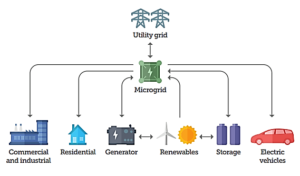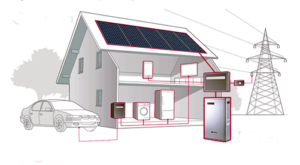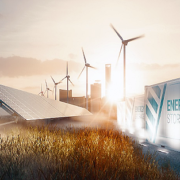Microgrids, the Legos of a Clean Energy Economy
Recently the subject came up, once again, as to what is wrong with Hawaii’s stated quest of 100% renewable energy by 2045. The why side of that same question is for another editorial, although BeyondKona readers will find plenty of articles, references, analyses, and as to the why reasons, published previously.
A fundamental building block to Hawaii’s potential clean energy future, microgrids.
Beyondkona explores the game-changing energy role microgrids offer, and why without them, Hawaii’s largest utility may continue to degrade in reliability, raise ratepayer costs without end, and possible fail to transform itself to serve a clean energy future for the people and economy of Hawaii.
Microgrids
How would microgrids, as part of Hawaii energy transformation, effectively respond to an increasingly unstable and uncertain world of changing energy supply markets, unending rising energy costs? Fundamental questions on the state’s path to achieve a sustainable, self-efficient, consumer-reliable clean energy future.
A Microgrid, by definition is a stand-alone or connected system serving a wide variety of localized energy demands. In both cases, these energy systems offer fundamental energy efficiencies and flexibility not found in today’s 20th century central utility power provisioning and transmission model, and are increasingly associated with zero emissions solar and wind energy sources coupled to onsite energy storage; primarily batteries.
First, Microgrids make clean and renewable energy, storage, and efficiency very attractive by integrating all them into a unified and resilient energy system.
The heart of microgrid benefits are two fundamental and enabling changes they offer to today’s utility grid.
- Microgrids are highly resilient and reliable in a changing world in which climate weather assumptions of the past no longer apply.
- Microgrids are also a “distributed” energy system, in which power is mostly produced and consumed at or near the point of energy production, i.e., rooftop solar, eliminating power loses and long distance energy transmission uncertainties.

Microgrids generally operate as fully automated, self-contained power systems (generation, storage, self-managed). From a house with rooftop solar and energy battery management and storage system. a community energy system, and/or scaled up to a section of a utility’s overall transmission grid system (aka grid island).
Further, increased deployment of clean and efficient “distributed” power technologies not only reduce or eliminate greenhouse gases and other emissions associated with today’s power grid system, but also offer energy security by mitigating power disruptions and disturbances not otherwise fully addressed with today’s 20th-century grid architecture.
Think of a microgrid as the name implies, as a smaller (localized) power system that generates power, completely manages power generation and distribution, does it simply and effectively through onsite power storage. Power flow regulation for on-demand power management is fundamental throughout the connected points to/from the microgrid.
Distributed Energy: solar + batteries (BESS), a powerful combination
The definition and application of microgrids continues to expand, based on both application and scale. The term “microgrid” also includes stand-alone rooftop solar and battery systems as key contributors to stability of existing utility-integrated systems.
At the same time, just within the past 5 years, significant technology advances in microgrid technology have broaden the very definition of what is a microgrid. Software developments and applications continue to lower energy and operating costs, both measured in terms of a system’s capex and the lifecycle costs of microgrid operations.
These same improving operating efficiency elements are making it increasingly difficult to defend 20th-century, business as usual, grid power assumptions relient on large scale and mostly reliable firm-power utility assumptions. This is especially true with rooftop and utility scale solar systems connected to onsite battery BMS technology.
Today’s advanced battery-management software (BMS) technology, is now incorporated within battery storage as a complete system. In effect, functioning as the energy brain of a micro-scale power plant specific to individual buildings. These stand-alone systems control the flow of power, both supply and demand, from building rooftops and batteries to the grid and back again). This same microgrid application and process includes real-time power balancing (between the point of local power generation <rooftop>, power flow balancing between consumption and production, while simultaneously managing power reserves stored within the local microgrid battery system; e.g., voltage, frequency, and waveform stability. But BMS benefits do not stop there, they further incorporate real-time diagnostics and contribute to grid stability.
 In the case of grid-connected battery systems, they manage real-time power demands, while simultaneously balancing power supply with demand between the microgrid and the utility grid and in the combination of managing one-way and two-way directional power flows. In effect these points of power production and consumption (as in individual buildings) can operate entirely independent or as part of the utility grid
In the case of grid-connected battery systems, they manage real-time power demands, while simultaneously balancing power supply with demand between the microgrid and the utility grid and in the combination of managing one-way and two-way directional power flows. In effect these points of power production and consumption (as in individual buildings) can operate entirely independent or as part of the utility grid
One popular system example is the Tesla Powerwall battery power management system, which can be easily accommodate same day activation for an individual home or commercial building complex rooftop solar system. In effect, it is a scaled-down version of what utilities rely on to manage centralized grid power production, power flow, and customer power connections (SCADA systems) — and at a fraction of the cost.
In short, microgrids operate as stand-alone systems, powering a home or commercial buildings, or scaled up to powering entire neighborhoods, college campuses, military bases, and even sectors of of a centralized grid system or connected as self-sufficient microgrid sectors comprising a larger grid system.
Microgrids are scalable, reliant, and proven clean energy transformation options whose time has come.
Microgrids are now transforming today’s inefficient and centralized power generation utilities, traditionally dependent on long hauling electricity (with power losses) through vulnerable grid infrastructures and over long distances, all of which are proving to be unreliable and costly to ratepayers, the environment, and Hawaii’s economy.
Hawaii, is more than ready to transform itself into a robust, distributed, and many times more efficient and cost-effective clean energy future.
Microgrids will enable this transformation faster, at lower cost, while delivering an intelligent, zero emissions (non-polluting and sustainable), and energy self-sufficient outcome; and one that is no longer dependent on burning trees, trash or fossil fuels for power.




Which companies offer PPA (power purchase agreements) to communities that are interested in installing a microgrid on the BI? There are a number of resort & residential communities that have the land on which they could install an adequately sized solar array and battery bank.
Mahalo